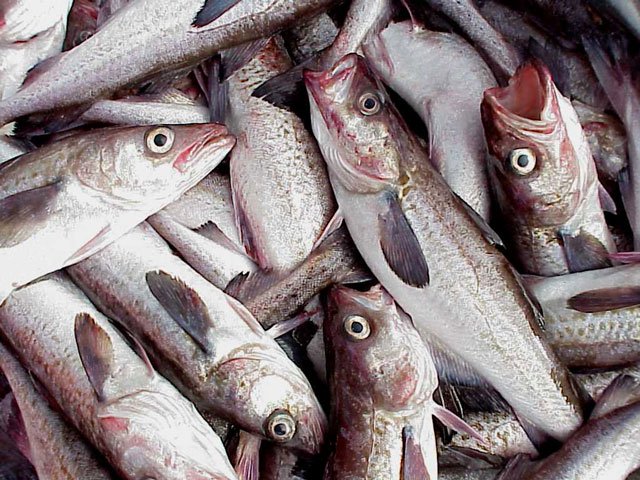Baits are critical to most fishermen’s catches and it can be a scramble to find ample supplies that change with the times.
Pollock is gaining traction as bait. NOAA photo.“Things change over the years. We always try to find what is the new best thing and try and stay ahead of the curve,” said Justin Hackley, vice president of sales and marketing for International Marine Industries of Newport, Rhode Island, a global bait provider for over 30 years.
Alaska is one of Hackley’s biggest customers and bait favorites have shifted due to changing weather patterns and cyclical availabilities of the fish. For decades it was east coast herring that kept Alaska fleets out fishing – until a better fish surfaced.
“It was herring for halibut or black cod longlining, or for crab or pot cod until a cheaper alternative came around – Pacific sardines caught off the coast of Astoria. That fish had fat content at 18 percent, way higher than you can get out of east coast herring,” Hackley said.
But the Pacific sardine fishery closed three years ago, and Hackley scrambled to find another bait replacement. It took some convincing, but last year Kodiak fishermen and processors agreed to bite.
“Pacific saury is the new up and coming bait that last year we got them to take, and it’s been quite successful,” he said.
Saury will be soaking in Tyler O’Brien’s pots when he sets out on the 58-foot Odin’s Eye for cod in January. At $1.00 a pound (up from 50 cents last year), he estimates the bait cost will be $4,500 for each three-day fishing trip.
Fishermen use different baits depending on the fishery, and often mix up their own blends from scraps to save money, O’Brien said.
“For crab we’ll catch and use fresh herring or cod and salmon roe. In the fall, we’ll get pink salmon discards from processors for halibut bait. We try and follow the seasonal tastes of the fish,” he explained.
Pacific saury already is feeling pressure from increasing demand, Hackley said, and bait prices for short supplies of squid have increased to $1.35 a pound at Dutch Harbor, up from 85-90 cents a year ago.
A newer bait alternative gaining traction in Alaska is pollock.
“I used to sell a lot of longline herring to halibut guys and everyone seems to want pollock now,” he said.
So why aren’t Alaska fisheries using local species as bait? In the case of herring (65 cents a pound) for halibut, at least, Hackley said size matters.
“These longliners want a certain size. Typically, herring from Sitka is too small and the Dutch Harbor herring is too big. But it is good for the pot guys,” he said.
Hackley credits Alaska for its sustainable management practices and believes he’ll have a good customer long into the future.
“As long as people are out there fishing and pots and hooks are going in the water,” Hackley said, “I’ll be there throwing frozen bait at ‘em.”







